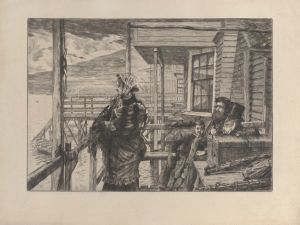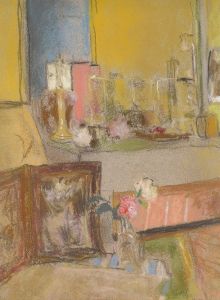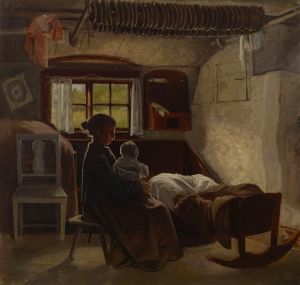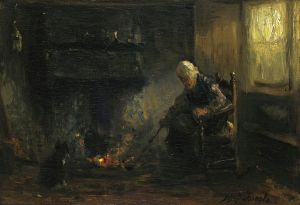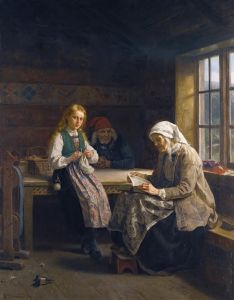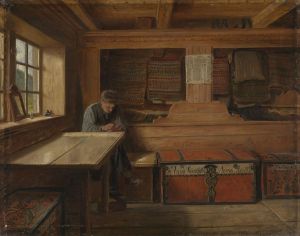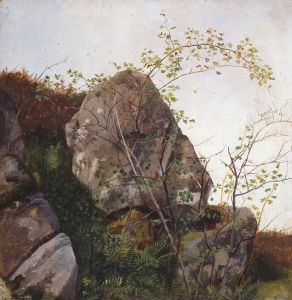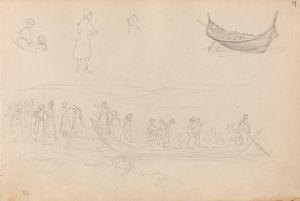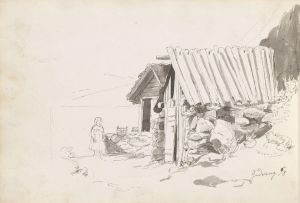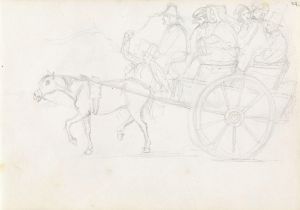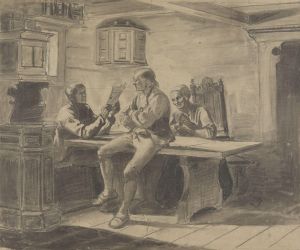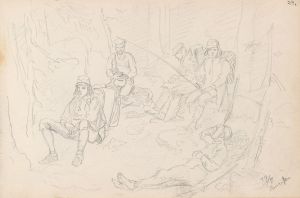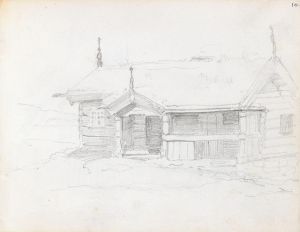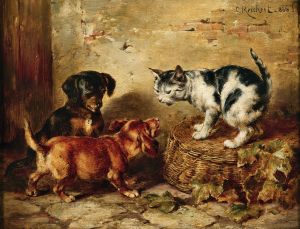
Søndagskveld i en røkstue
A hand-painted replica of Adolph Tidemand’s masterpiece Søndagskveld i en røkstue, meticulously crafted by professional artists to capture the true essence of the original. Each piece is created with museum-quality canvas and rare mineral pigments, carefully painted by experienced artists with delicate brushstrokes and rich, layered colors to perfectly recreate the texture of the original artwork. Unlike machine-printed reproductions, this hand-painted version brings the painting to life, infused with the artist’s emotions and skill in every stroke. Whether for personal collection or home decoration, it instantly elevates the artistic atmosphere of any space.
Adolph Tidemand was a prominent Norwegian painter in the 19th century, known for his detailed and evocative depictions of Norwegian folk life and traditions. One of his notable works is "Søndagskveld i en røkstue," which translates to "Sunday Evening in a Smokehouse." This painting is a quintessential example of Tidemand's ability to capture the essence of rural Norwegian culture during his time.
"Søndagskveld i en røkstue" is a genre painting, a style that Tidemand excelled in, which focuses on scenes from everyday life. The painting depicts a traditional Norwegian smokehouse, a type of building used historically for smoking meat and fish, but also often used as a gathering place in rural communities. The setting is intimate and warm, reflecting the communal and familial aspects of Norwegian rural life.
In the painting, Tidemand portrays a group of people gathered inside the smokehouse on a Sunday evening. The scene is likely set in the 19th century, a period when Norway was experiencing a national romantic movement, which sought to celebrate and preserve Norwegian culture and traditions. This movement was partly a response to Norway's political situation, as the country was striving to assert its national identity after centuries of union with Denmark and then Sweden.
Tidemand's attention to detail is evident in the way he captures the interior of the smokehouse, with its wooden beams and rustic furnishings. The figures in the painting are depicted in traditional Norwegian attire, which adds to the authenticity and historical value of the work. The lighting in the painting is soft and subdued, suggesting the glow of a fire or candlelight, which enhances the cozy and intimate atmosphere of the scene.
The composition of "Søndagskveld i en røkstue" reflects Tidemand's skill in arranging figures and elements to create a harmonious and engaging scene. The people in the painting are engaged in various activities, such as talking, listening, and perhaps singing or storytelling, which were common pastimes in rural Norwegian communities. This depiction of social interaction highlights the importance of community and tradition in Norwegian culture, themes that were central to Tidemand's work.
Adolph Tidemand's paintings, including "Søndagskveld i en røkstue," played a significant role in shaping the perception of Norwegian identity and heritage. His works were celebrated for their ethnographic accuracy and artistic quality, and they continue to be appreciated for their historical and cultural significance. Tidemand's ability to convey the spirit of Norwegian folk life has made his paintings enduring symbols of national pride and cultural heritage.
"Søndagskveld i en røkstue" is housed in the National Museum of Art, Architecture and Design in Oslo, Norway, where it remains an important part of the country's artistic legacy. The painting is a testament to Tidemand's contribution to the national romantic movement and his dedication to preserving the cultural history of Norway through his art.





